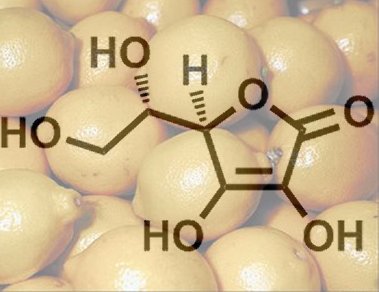The following plants show anti-scurvy activity.
 Arbor vitae (Thuja occidentalis) became the first documented remedy for scurvy. A brew prepared from Thuja twigs worked wonders for Jacques Cartier’s crew when they were forced to spend a winter in the St. Lawrence. The healing powers of this plant are expressed quite eloquently by its colloquial name arbor vitae (“tree of life”), but after the initial recognition of its medicinal powers this knowledge faded quickly into obscurity, and its medicinal powers were apparently never to be exploited again, at least in the context of civilized society.
Arbor vitae (Thuja occidentalis) became the first documented remedy for scurvy. A brew prepared from Thuja twigs worked wonders for Jacques Cartier’s crew when they were forced to spend a winter in the St. Lawrence. The healing powers of this plant are expressed quite eloquently by its colloquial name arbor vitae (“tree of life”), but after the initial recognition of its medicinal powers this knowledge faded quickly into obscurity, and its medicinal powers were apparently never to be exploited again, at least in the context of civilized society.
Given current knowledge, drinking a thuja brew could be rather problematic, because one of its active components, thujone, has been shown to be neurotoxic [1]. Instead, arbor vitae is a popular hedge plant.
 Sauerkraut (Brassica oleracea var. capitata f. alba) is prepared from finely chopped cabbage through a complex, weeks-long fermentation, dominated initially by yeast and acetic acid bacteria, and later by various lactic acid bacteria. Due to low pH, at least a portion of the vitamin C from the cabbage survives, unaffected by the fermentation process.
Sauerkraut (Brassica oleracea var. capitata f. alba) is prepared from finely chopped cabbage through a complex, weeks-long fermentation, dominated initially by yeast and acetic acid bacteria, and later by various lactic acid bacteria. Due to low pH, at least a portion of the vitamin C from the cabbage survives, unaffected by the fermentation process.
Sauerkraut is especially popular in eastern and northern Europe, where, particularly in the past, it constituted a significant wintertime source of vitamin C.

The onion (Allium cepa) is perhaps the most important representative of the genus Allium, native originally to the steppes of western Asia. Orders were at one time given that onions were to be eaten regularly (raw) on long sea journeys, although the seamen themselves were expected to arrange for their own onion supply. This source of vitamin C source keeps well, so a certain degree of requisite nourishment was, thus, assured for crews on excursions of several months.
 Lesser celandine, or simply celandine (Ranunculus ficaria), was once known as “pilewort” due to its having commonly been used to treat hemorrhoids, or “piles”. It was used for this purpose because of a physical resemblance between the plant’s knobby tubers and piles themselves, and according to the long-held notion of the “doctrine of signatures” herbs that resemble various parts of the body can be used to treat ailments of that body part.
Lesser celandine, or simply celandine (Ranunculus ficaria), was once known as “pilewort” due to its having commonly been used to treat hemorrhoids, or “piles”. It was used for this purpose because of a physical resemblance between the plant’s knobby tubers and piles themselves, and according to the long-held notion of the “doctrine of signatures” herbs that resemble various parts of the body can be used to treat ailments of that body part.
Celandine is a member of the buttercup family, with a preference for moist, loamy soil in meadows or sparse, deciduous forests. A perennial herbaceous plant, it grows to a height of only 20 cm (ca. 8 inches). Its yellow blossoms appear as early as March. After blooming, the toxin protoanemonin accumulates in significant amounts, so consumption of the plant at this stage must be strictly avoided.
.jpg)
The potato (Solanum tuberosum) is a “nightshade plant” (genus Solanum), first imported into Europe in 1555 and originally regarded as ornamental. In Germany it has been cultivated since the beginning of the 18th century as a dietary staple. As potato tubers are rich in vitamins, potatoes became the primary source of vitamin C for the poor. Not surprisingly, scurvy is often encountered in epidemic proportions following an exceptionally poor harvest, typically due to pest infestations.
Scurvy grass (Cochlearia officinalis) is a cruciferous plant found in salty marshland on virtually all the European coastlines, ranging as far north as the Arctic. The plants are typically about 12 inches high (30 cm), with leaves that taste similar to cress. Scurvy grass was once a standard component of herb gardens. For its use on long sea journeys as a scurvy preventative, it was collected shortly before a projected winter away, and then distributed to the crew throughout the winter.

The bell pepper (Capsicum annuum), is another relevant “nightshade plant”, this time a perennial. Botanically, its popular fruit is a berry. The wife of the Hungarian chemist and Nobel Prize winner, Albert Szent-Györgyi, once served him a fresh pepper for supper. In his autobiography he wrote: “I had no appetite for it, and considered what else one might do with it. It suddenly occurred to me that this was a plant that had in fact never been carefully studied. I immediately took it into the laboratory, and by midnight I already knew that it constituted a treasure chest of vitamin C”.

Acerola (Malphigia glabra) is a small tree, native to tropical forests. Its red fruit is reminiscent of the European cherry. Juice from the fruit contains up to an astonishing 4.5 % vitamin C, the level being greatest in fruit that is not yet ripe. Dried acerola juice is sometimes added as a “natural, vitamin-C-rich” supplement to products described as “organic” (including “Gummi Bears”!).
Reference
[1] K. Roth, Chem. Unserer Zeit 2005, 39, 130. DOI: 10.1002/ciuz.200590014
This is a part of the article:
- Vitamin C Deficiency,
Klaus Roth, Sabine Streller,
ChemistryViews Mag. 2014.
DOI: 10.1002/chemv.201300134




